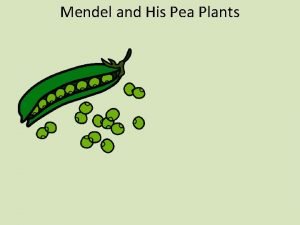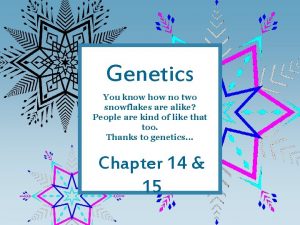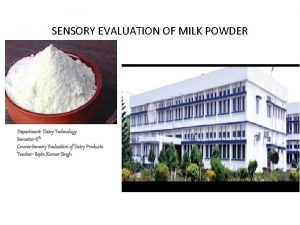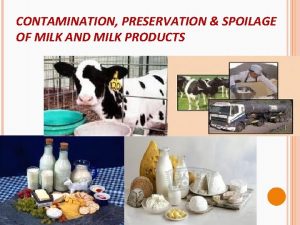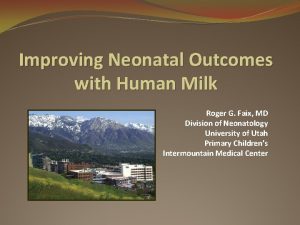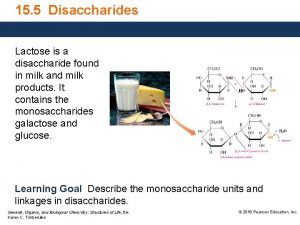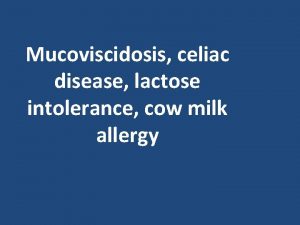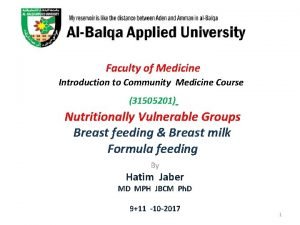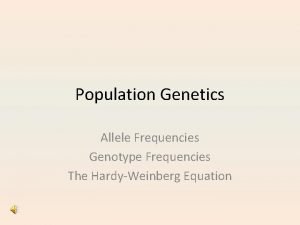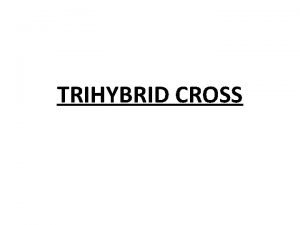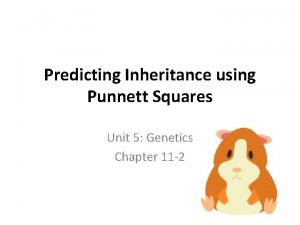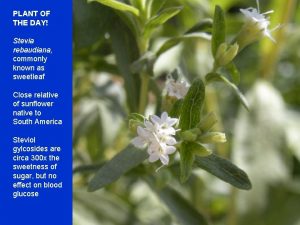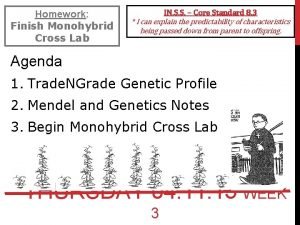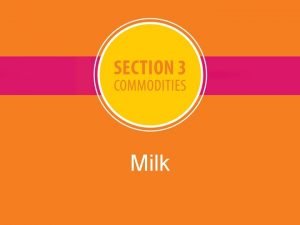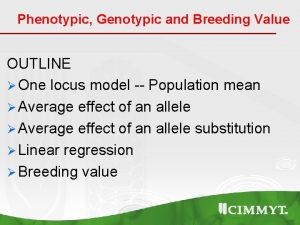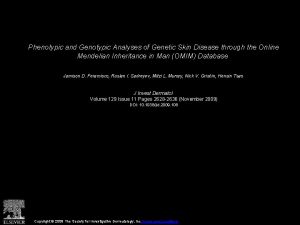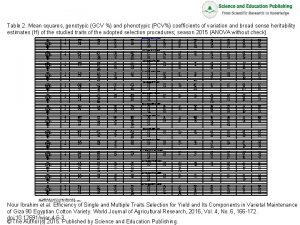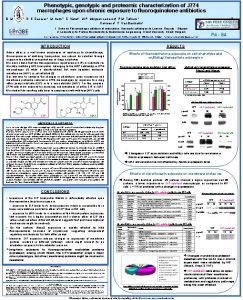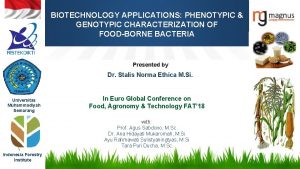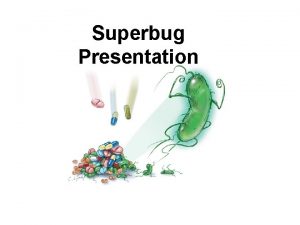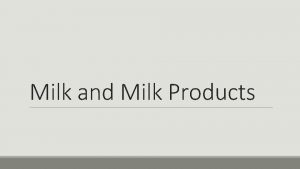Phenotypic and genotypic impact of milk components and














- Slides: 14

Phenotypic and genotypic impact of milk components and body weight composite on dry matter intake Sajjad Toghiani * 1, Paul Van. Raden 1 , Mike Vande. Haar 2, and Robert Tempelman 2 1 USDA-ARS, Animal Genomics and Improvement Laboratory, Beltsville, MD, USA 2 Department of Animal Science, Michigan State University, East Lansing, MI, USA * sajjad. toghiani@usda. gov Meeting, Location, Date (MEETING, 1) ADSA VIRTUAL ANNUAL JULY 11 -14 ( 1) Presenter Toghiani

Backgrounds Improvement in feed efficiency in dairy industry matters – Farm profitability – Environmental management Dry matter intake (DMI) – Key factor to Measure feed efficiency – Main quantity in dairy nutrition research – Develop breeding objectives for breeding programs q Feed efficiency, methane emissions Meeting, Location, Date (MEETING, 2) ADSA VIRTUAL ANNUAL JULY 11 -14 ( 2) Presenter Toghiani

Why feed efficiency is important? Feed costs represent the largest operating cost in dairy production Since 1990, feed efficiency was intended to initiate as breeding objective Collecting feed intake data was and still is expensive and difficult q Exclusively recorded in research herds • Larger datasets required for accurate estimation of genetic parameters q Using information from multiple data source Meeting, Location, Date (MEETING, 3) ADSA VIRTUAL ANNUAL JULY 11 -14 ( 3) Presenter Toghiani

Factors affecting Feed Efficiency Residual feed intake (RFI) – Difference between actual and predicted dry matter intake q Independent of variation in BW and level of production q Low or Negative RFI → More efficient cows q High or Positive RFI → Less efficient cows – RFI is a useful tool for selecting efficient dairy cows q Reducing feed cost at the herd level Body weight (BW)/Body size – Plays a major role for cow’s maintenance requirement – Improving feed efficiency by selecting cows with smaller BW q Leading to a decrease in maintenance cost Meeting, Location, Date (MEETING, 4) ADSA VIRTUAL ANNUAL JULY 11 -14 ( 4) Presenter Toghiani

Objectives Use feed intake data from U. S. Holstein dairy research herds – To develop prediction models for DMI and BW from phenotypic and genomic regression of key energy sink traits – To estimate the maintenance cost and feed cost of milk components associated with DMI for each given model Meeting, Location, Date (MEETING, 5) ADSA VIRTUAL ANNUAL JULY 11 -14 ( 5) Presenter Toghiani

U. S. Feed efficiency database Feed efficiency Project – USDA-NIFA grant $5 M (2010 -2015) – CDCB-FFAR grant $2 M (2019 -2024) Main U. S. research herds – – – Univ. of Wisconsin (WI) Univ. of Florida (FL) Michigan State Univ. (MI) Iowa State Univ. (IA) USDA-AGIL (MD) Data collection – Mid-lactation (50 -200 days in milks) • Recording period of 28 and 42 -days – Dry matter intake (DMI) – Milk yield and components – Body weight and BCS Data processing – Quality Data checked • CDCB and contributing institutions – Data joint with cooperator database • Pedigree, Birth date, Calving dates, Parity, etc. Meeting, Location, Date (MEETING, 6) ADSA VIRTUAL ANNUAL JULY 11 -14 ( 6) Presenter Toghiani

Mixed Models for DMI records used from 6, 338 lactations of 5, 094 U. S. Holstein cows – Implementing mixed models through SAS PROC MIXED Common fixed effects – Overall mean – Days in milk – Age-Parity – Body weight change Common random effects – Herd-year – Experimental trial – Residual effect Meeting, Location, Date (MEETING, 7) ADSA VIRTUAL ANNUAL JULY 11 -14 ( 7) q Phenotypic Model Phenotypic regression (Kg) – Milk yield – Fat yield – Protein yield – Metabolic body weight q Genomic Model Genomic regression (GEBV) – Milk yield – Fat yield – Protein yield – BWC q Sire’s genomic Model Sire’s genomic regression (GEBV) – Milk yield – Fat yield – Protein yield – BWC q Extended genomic Model Genomic regression (GEBV) – Milk yield – Fat yield – Protein yield – Stature – Strength – Body depth – Dairy form Presenter Toghiani

Feed cost for yield components Marginal feed cost ($)/ 100 kg standardized milk Milk S. E. Fat 6. 47 0. 007 ± 0. 008 2. 82 ± 0. 13 5. 32 ± 0. 31 Genomic regression 16. 77 0. 076 ± 0. 03 10. 82 ± 0. 60 7. 88 ± 1. 34 Sire Genomic regression 2 11. 37 0. 043 ± 0. 05 6. 43 ± 1. 14 6. 66 ± 2. 35 NM$ 2018 16. 95 0. 225 -- 5. 42 -- 7. 50 -- NM$ 2021 11. 52 0. 120 -- 5. 00 -- 6. 00 -- Theoretical (Dado et al. 1994) 12. 43 0. 112 -- 4. 42 -- 8. 17 -- ECM (National Research Council, 2001) 9. 14 0. 122 -- 4. 82 -- 2. 85 -- Method Phenotypic regression DMI (kg) required per unit of component output Fat S. E. Protein S. E. Each method gave differing feed cost for milk component, especially for fat yield. Phenotypic regression indicates much more feed requires to produce protein than Fat. Genomic regression shows the opposite result which producing fat requires more feed than protein. New data indicates that milk fluid and protein may require less feed than previously assumed in NM$ 2018. Meeting, Location, Date (MEETING, 8) ADSA VIRTUAL ANNUAL JULY 11 -14 ( 8) Presenter Toghiani

Maintenance cost per year Methods NM$ 2018 value NRC 2001 value NRC 2021 value Phenotypic regression Genomic regression Sire genomic regression NM$ 2021 value Maintenance (pounds DMI/pound BW) 1. 7 2. 7 3. 4 5. 8 6. 3 5. 9 4. 5 Standard error … … … ± 0. 18 ± 0. 42 ± 0. 72 … Estimates from CDCB data give much higher maintenance cost compared to NRC values – When regressing DMI on phenotypic, genomic and sire’s genomic body size predictors Direct emphasis assigned against BWC in NM$ 2021 (- 9. 4%) vs. NM$ 2018 (-5. 3%) Meeting, Location, Date (MEETING, 9) ADSA VIRTUAL ANNUAL JULY 11 -14 ( 9) Presenter Toghiani

DMI prediction using 5 type traits forming BWC Including genomic BWC is significant for predicting DMI, Directly associated with maintenance cost Replacing BWC predictor with 5 type traits forming this index is valuable to test for predicting DMI (kg/day) required per unit of component output Type traits Stature Strength Body depth Dairy form Rump width estimates (S. E. ) 0. 04 (± 0. 07) 0. 75 (± 0. 24) -0. 17 (± 0. 26) 0. 02 (± 0. 12) 0. 03 (± 0. 06) Multicollinearity Diagnostic checked because of possible high correlation between type trait predictors Body depth has the largest VIF score, leading to unstable estimate and high S. E. Meeting, Location, Date (MEETING, 10) ADSA VIRTUAL ANNUAL JULY 11 -14 ( 10) Presenter Toghiani

DMI prediction using 4 type traits forming BWC Body depth removed from the set of 5 type traits due to highly VIF score. Strength was the most significant predictor associated with DMI, agreeing with the current BWC formula Although including only BWC in the mixed model was statistically significant, dissecting BWC to its 4 type trait components shows smaller AIC indicating the best fitted model. Meeting, Location, Date (MEETING, 11) ADSA VIRTUAL ANNUAL JULY 11 -14 ( 11) DMI (kg/day) required per unit of each type trait Type traits Stature Strength Body depth Dairy form Rump width Multicollinearity Diagnostic Before After Estimates (S. E. ) 0. 04 (± 0. 07) 0. 75 (± 0. 24) 0. 60 (± 0. 07) -0. 17 (± 0. 26) -0. 02 (± 0. 12) -0. 05 (± 0. 05) 0. 03 (± 0. 06) 0. 04 (± 0. 06) Presenter Toghiani

BW prediction using type traits forming BWC All 5 type traits included in BW model as predictors shown statistically significant. Body depth predictor removed from the model after detecting with highly VIF score (> 30). Strength and dairy form were the most important trait associated with BW, after removing body depth. The importance and direction of coefficients used for strength and dairy form traits in BWC formula for HOL breed, supported by the estimates of both traits and their relationship with BW. Meeting, Location, Date (MEETING, 12) ADSA VIRTUAL ANNUAL JULY 11 -14 ( 12) BW (kg) required per unit of each type trait Multicollinearity Diagnostic Before After Type traits Estimates (S. E. ) Stature 7. 96 (± 1. 12) 7. 82 (± 1. 12) Strength 46. 91 (± 3. 79) 29. 30 (± 1. 19) Body depth -20. 52 (± 4. 19) -Dairy form -4. 16 (± 1. 86) -12. 34 (± 0. 82) Rump width 2. 05 (± 1. 01) 3. 40 (± 0. 98) Weights (%) from BWC formula Holstein and Jersey and Type traits other Breeds Brown Swiss Stature 23 28 Strength 72 28 Body depth 8 -Dairy form -47 -35 Rump width 17 9 Presenter Toghiani

Conclusions Phenotypic regressions of DMI on yield components were much less than corresponding genomic regressions. For 100 kg of standardized milk with 3. 5% fat and 3. 0% protein, – Estimated feed costs of genomic regression was 2. 6 times more than phenotypic regression The average of annual maintenance cost from estimates using phenotypic, genomic, and sire genomic regressions – 2 X more than published NRC values in 2001 and 2021 – 3. 5 X more than assumed NM$ 2018 value. Selection for breeder should be more profitable – Smaller cow size – Eating less than expected (lower RFI) – Produce more milk components NM$ revision 2021 will be implemented in August by CDCB Meeting, Location, Date (MEETING, 13) ADSA VIRTUAL ANNUAL JULY 11 -14 ( 13) Presenter Toghiani

Acknowledgments USDA-ARS project 8042 -31000 -002 -00, “Improving Dairy Animals by Increasing Accuracy of Genomic Prediction, Evaluating New Traits, and Redefining Selection Goals” CDCB and its industry suppliers for data Feed intake funding – Agriculture and Food Research Initiative Competitive Grant #2011 -6800430340 from USDA National Institute of Food and Agriculture – Foundation for Food and Agriculture Research (FFAR) Meeting, Location, Date (MEETING, 14) ADSA VIRTUAL ANNUAL JULY 11 -14 ( 14) Presenter Toghiani
 Phenotypic ratio in dihybrid cross
Phenotypic ratio in dihybrid cross Pea plant phenotype
Pea plant phenotype Phenotype ratio
Phenotype ratio Sensory evaluation of dairy products
Sensory evaluation of dairy products Contamination of milk and milk products
Contamination of milk and milk products Cow milk vs breast milk
Cow milk vs breast milk Disaccharide found in milk and milk products
Disaccharide found in milk and milk products Milk for toddlers with milk allergynon dairy
Milk for toddlers with milk allergynon dairy Human milk vs cow milk
Human milk vs cow milk Allelic frequencies
Allelic frequencies Trihybrid cross example
Trihybrid cross example Bb x bb genotype
Bb x bb genotype Agamospecies concept
Agamospecies concept Punnett squares
Punnett squares Laboratory lryics
Laboratory lryics

